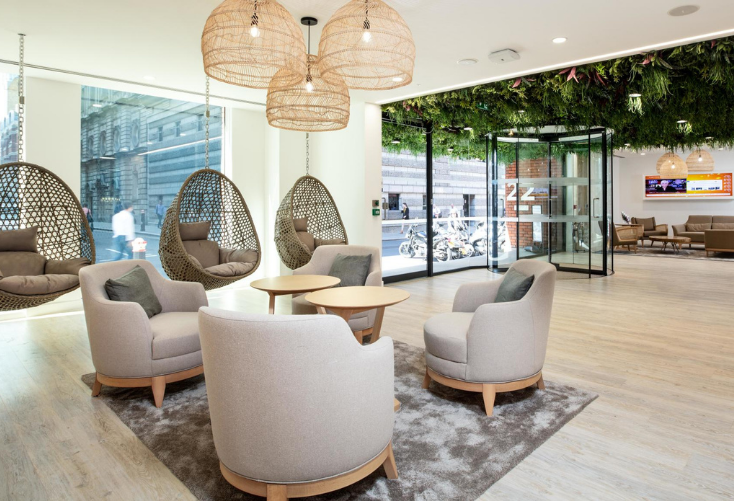Hand selected flexible workspace news from the most reliable sources to keep you ahead of the pack. We find all the latest news, so you don’t have to. Morning and afternoon updates. Stay in the know.
Here’s what you need to know today:
- Industrious Remains Confident As Demand Increases
- How Workspaces Are Adapting To Tightened Restrictions
- How To Identify If You Are At Risk Of Burning Out
Industrious Remains Confident As Demand Increases
Despite the ongoing trend of an increasingly remote workforce, coworking company Industrious is trudging forward with new expansion plans in Tampa Bay in anticipation of growing demand.
The company has become dedicated to increasing sanitation and distancing measures in its new locations in downtown St. Petersburg’s Central Avenue tower, Tampa’s Water Street project and in Ybor City.
“We expect there will be a real surge in demand during the early part of next summer, and we’ll be delivering these new locations to meet that,” said Peri Demestihas, director of real estate at Industrious. “Tampa is a fantastic market for us and I think with these new locations we’ll really be set up for success there.”
In addition to increasing their cleaning practices, Industrious will also implement one-way hallways, on-site temperature screenings, new air filtration systems and has reconfigured their offices and conference rooms to cut down on density.
Although the core of coworking has been the shared use of office space and other amenities, Demestihas believes that Industrious’ philosophy of offering private workspaces sets it apart from competitors.
“People are telling us that they feel Industrious, because of what we’ve done, has become the second safest place in their lives behind their own homes,” said Jennifer Reilly Kelmer, an area manager for Industrious’ Florida operations. “Our members are breathing sighs of relief as they get back to more business.”

How Workspaces Are Adapting To Tightened Restrictions
UK professionals are being encouraged to continue working from home after England’s spike in COVID-19 cases.
This has been a complete 180-degree shift from the previous month after many employees started returning to the office. So how are commercial real estate experts preparing for these changes now and in the long-term?
With UK productivity slipping and employee wellbeing taking a hit, employees will need extra support moving forward. For instance, Giles Fuchs, CEO serviced office company Office Space in Town, says the company is dedicated to keeping their offices open in order to provide a safe workspace for those who need socialization.
For Khalid Aziz, marketing director of BizSpace, decentralizing the office may be the best method to keeping workers safe, while continuing to offer them workplace amenities.
“It’s clearly a challenge for businesses to manage new working preferences, with some workers wishing to remain at home or work more flexibly in the long-term and others favouring a more permanent return to the office,” said Aziz. “This is where decentralising office space and adopting a hub and spoke model can provide businesses with a solution – moving away from costly, large city-centre HQs and instead opening smaller regional offices for a happy medium between home and office work.”
Richard Morris, sales and marketing director at technologywithin, believes that touchless technology will play a big role in helping workers feel secure in the workplace. Using technologies such as security systems, automated temperature and lighting systems, and other tools can help make working in an office safe and seamless.

How To Identify If You Are At Risk Of Burning Out
After various regions across the country went into lockdown seemingly overnight, people may have wondered how they would fill their newfound free time. For many, work was the answer.
As companies shifted to remote operations, the normal 9 to 5 schedule that millions of people were adjusted to altered. Working from home seemed like a silver lining for being in the midst of a pandemic, but this arrangement began to hinder the mental health of several workers.
Without the appropriate boundaries in place, people can suffer from exhaustion and burnout, which can have a direct impact on their quality of work. So how can you identify if you are suffering from burnout?
One trait that many remote workers share is the inability to take time off even if you’ve earned it. In fact, a survey by Monster found that 59% of remote workers are taking less time off than normal and 42% do not set aside time for self-care.
Another telltale sign of approaching burnout is using work as an escape from stress. Instead of using time off to relax and connect with loved ones, people may use working to avoid the new realities of the world. Our jobs are familiar to us, so using it as an escape from the new way of living may be a source of relief for people.
Along with using this stress-relief method, remote workers often struggle to set boundaries between their home and work life. Without dedicating a specific schedule and space to conduct work and squeezing in work tasks throughout the entire day, workers become high risk of burning out.



 Dr. Gleb Tsipursky – The Office Whisperer
Dr. Gleb Tsipursky – The Office Whisperer Nirit Cohen – WorkFutures
Nirit Cohen – WorkFutures Angela Howard – Culture Expert
Angela Howard – Culture Expert Drew Jones – Design & Innovation
Drew Jones – Design & Innovation Jonathan Price – CRE & Flex Expert
Jonathan Price – CRE & Flex Expert













